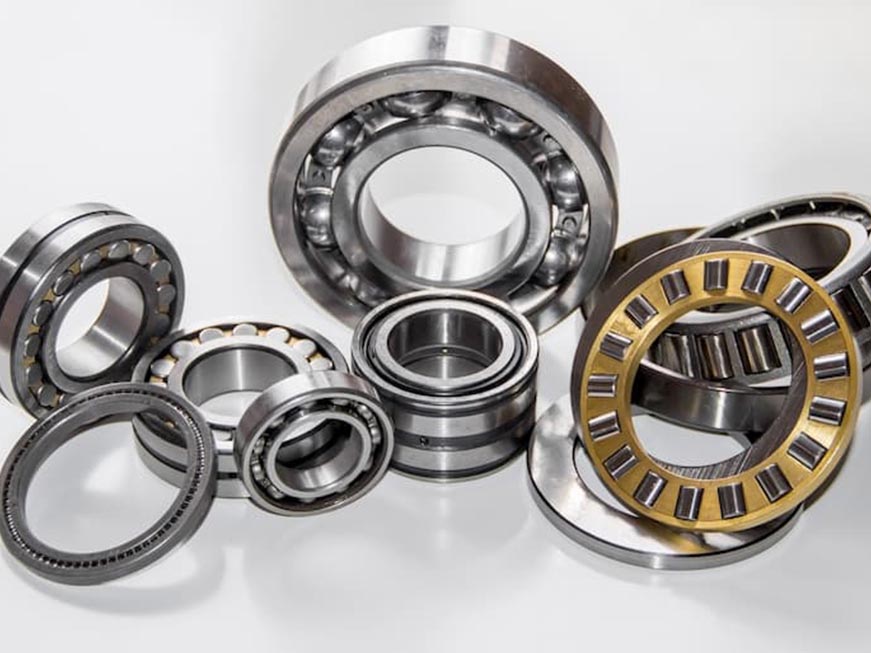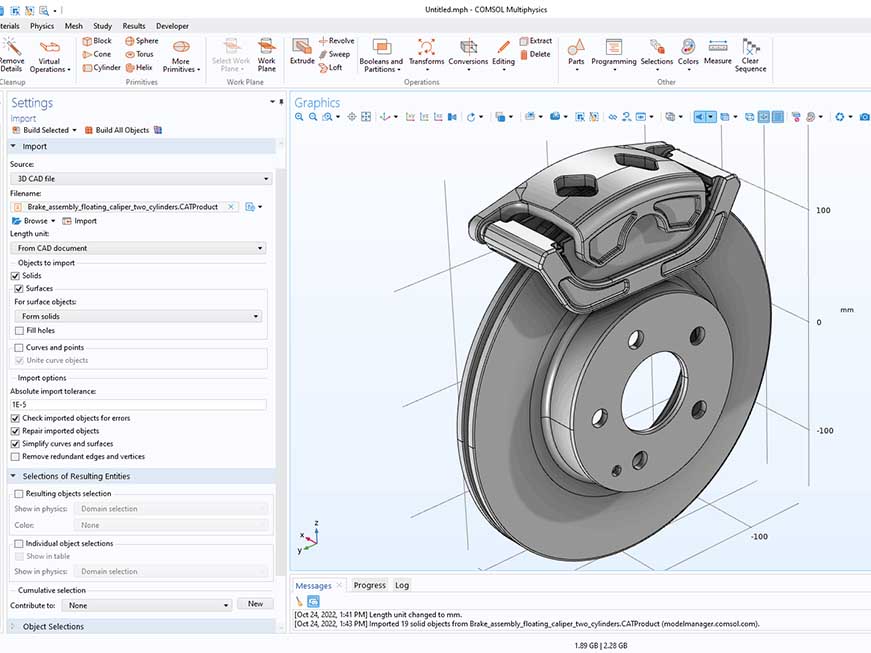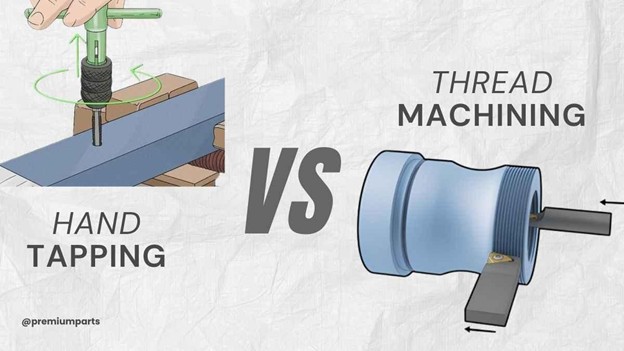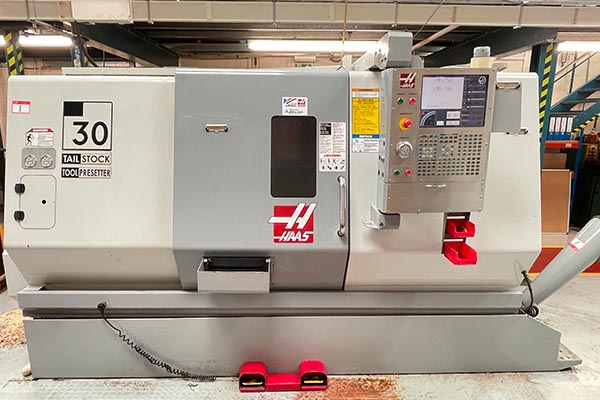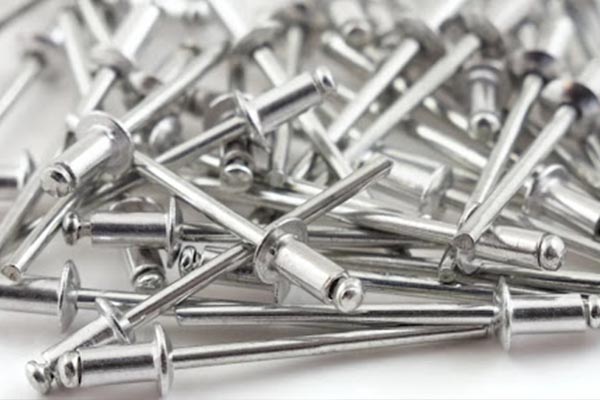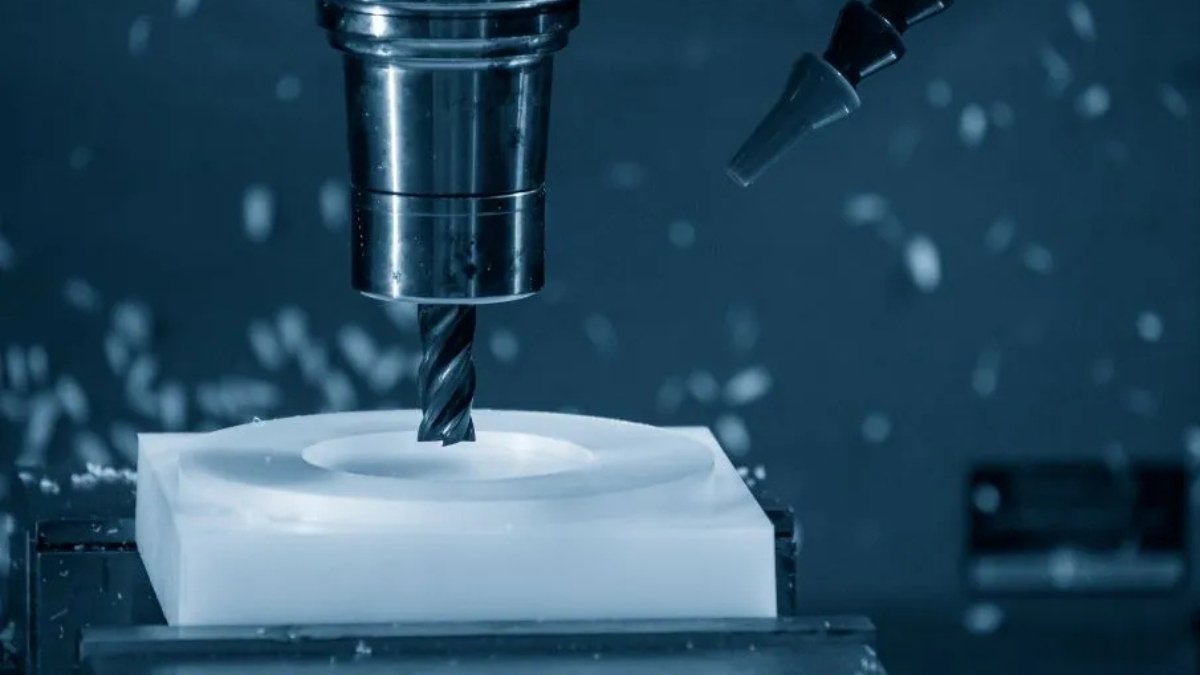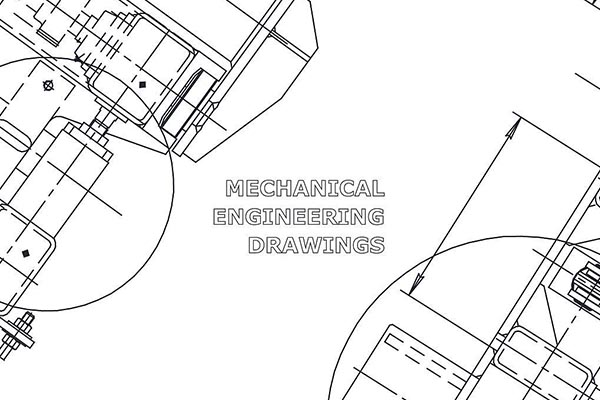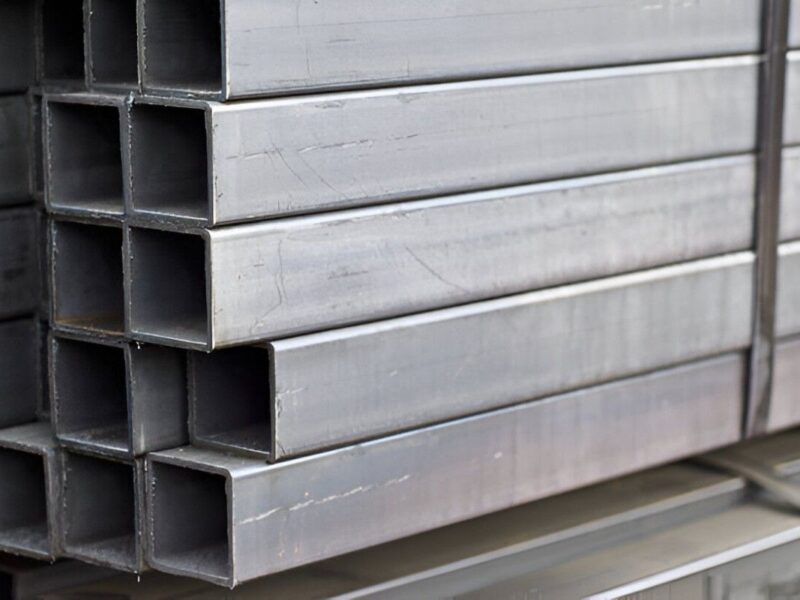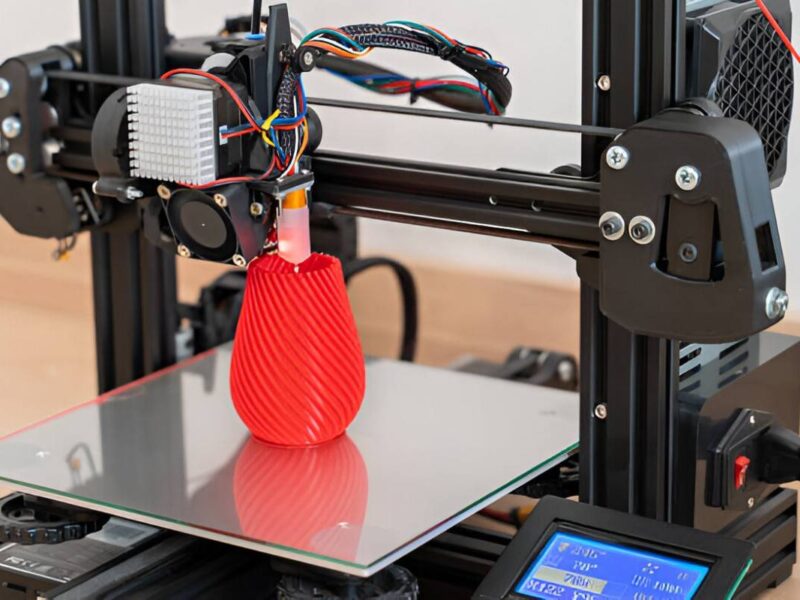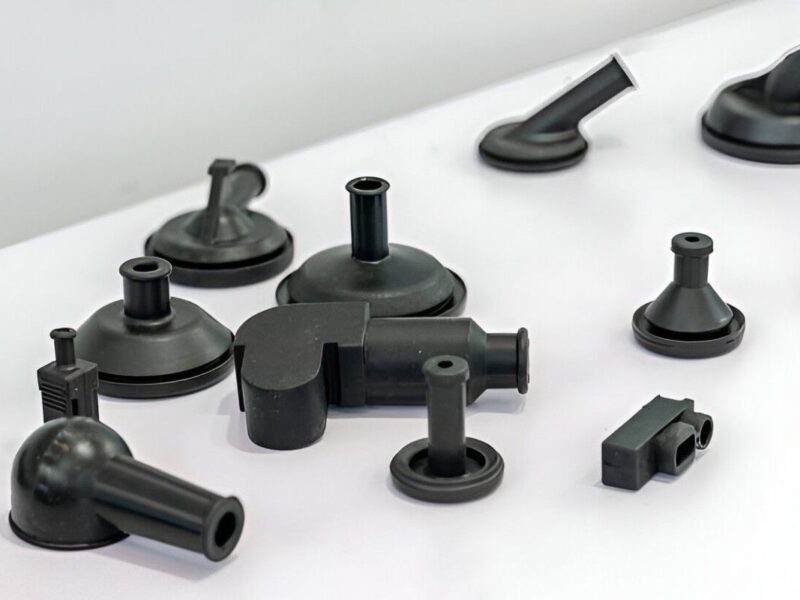What makes aluminum a great match for CNC turning machines? Aluminum is used in everything! It is in aircraft parts, automobiles, and even kitchen appliances. The properties of aluminum make it a popular material to produce quality products. Aluminum components are lightweight, corrosion-resistant, and yet extremely durable. They are also less costly than other materials, making them a sensible option for manufacturers.
In addition, aluminum allows for complex designs with close tolerances. This makes aluminum perfect for prototyping and large custom runs. However, how do manufacturers continuously create complex shapes with aluminum? Of course, through aluminum CNC machining. Now, let’s examine the benefits of CNC-turned aluminum parts, their manufacturing process, and other aspects.
Overview of Aluminum-Turned Parts
CNC stands for Computer Numerical Control, and this process is known for its speed and precision. The CNC machines turn the materials such as aluminum into the desired shape with optimal accuracy. For CNC machining, aluminum shines because it is easy to machine, strong, and inexpensive. Manufacturers often look to aluminum as their material of choice. CNC machining allows them to create parts exactly how they see fit with a precision of 100%.
Aerospace is one industry that benefits from CNC machining of aluminum. Aluminum is an attractive material for aerospace parts because of its lightweight properties, which are important when designing complex and intricate parts oftentimes. CNC machines enable manufacturers to make these complex parts.
What Makes Aluminum the Right Choice for CNC-Turned Parts?
In the past few years, CNC-turned aluminum parts have been in demand in many industries. What makes aluminum so popular for machining? Here are six reasons that show aluminum is the best material for CNC machining.
Ductility for CNC-Turned Parts Manufacturing
aluminum has excellent machinability. Turning aluminum will not wear cutting tools excessively, and it is easy to use. Therefore, it allows for fast and very accurate machining while keeping the material dimensionally stable.
Aluminum parts generally involve the machining process using CNC turning machines, carbide tooling, and efficient coolants. They make it easy to achieve a smooth and uniform surface. The precision of the machining process shortens both time and costs. However, aluminum CNC-turned parts manufacturing does not end with machining; it also needs finishing. For example, bead blasting for a matte finish or anodizing for a polished finish. Besides, the finishing can improve the part’s resistance to corrosion depending on the formulation and color.
Strength and Durability
aluminum is very strong and extremely durable. It does not break or crack while machining, allowing production to proceed smoothly. Aluminum CNC-turned parts can take tough and demanding daily use without compromising their integrity. Moreover, it has a great strength-to-weight ratio, making it an ideal choice for industries that need light products. The major industries include aerospace, automotive, and robotics.
A weak material has no standing in CNC machining. Aluminum parts are very durable, giving years of service without any significant wear or degradation in the part’s function. It is this durability that makes aluminum an obvious choice for manufacturers in their CNC machining projects.
Variety of Alloy Options
aluminum’s capacity to accommodate alloying elements makes it exceptionally flexible for CNC-turned parts, allowing manufacturers to control aluminum’s characteristics to suit a variety of performance specifications.
Some of the most frequently used alloyed aluminum for CNC machining include:
- 6061: 6061 offers excellent strength, corrosion resistance, and good machinability. Moreover, it is a suitable and flexible choice for structural components and general-purpose applications.
- 2024: A high-strength alloy with fatigue resistance, 2024 is a great option for aerospace and military components. However, protective coatings are required to guard against corrosion due to lower inherent levels of corrosion resistance.
- 7075: Its primary uses are for the manufacturing of high-strength parts such as aircraft fittings. 7075 has middling corrosion resistance, but manufacturers can make it durable.
- 5052: Comes with good corrosion resistance and great formability. It has major uses in marine, electrical, and fuel system parts. 5052 had middling strength and was easy.
With so many alloys to choose from, you can choose one that will deliver both strength and some visual appeal to your aluminum CNC-turned parts. The variety of alloy types means that aluminum can fulfil its role for utilitarian purposes as well as for aesthetic ones.
Corrosion Resistance
aluminum has a unique advantage. When exposed to air, it forms a protective oxide layer. This happens when aluminum comes in contact with oxygen. This layer, which is aluminum oxide, is very thin and protects the underlying metal from corrosion. Corrosion has a destructive effect that can destroy metals, so this layer effectively helps to keep metal strong and intact over time. Thus, due to this corrosion resistance, aluminum can last a longer period. Besides, aluminum is a more durable metal, which makes it even more attractive for CNC-turned parts manufacturing.
Cost Effectiveness
aluminum is cheap and readily available. Therefore, the cost adds up quickly when it comes to the manufacturing of relatively cheap metals, such as aluminum. Moreover, the processing cost of aluminum CNC-turned parts manufacturing is low when compared to other materials. Aluminum parts bear no additional cost during the assembly stage for manufacturers, allowing budgets to remain on track.
There are comparable materials, like titanium, that have similar properties to aluminum, but they are generally much more expensive. Aluminum is not as strong as titanium, but since it is less expensive, it provides a better alternative. When viewing costs, aluminum is a good middle ground that is prime and reasonable for what you get.
Which aluminum Alloy is best for CNC Turned Parts Manufacturing?
Not every aluminum alloy has a uniform composition; each is unique. Besides, the proper selection of alloy is a key aspect of the performance of your project. Manufacturers use these alloy elements to create requisite parts. There’s a wide range of aluminum grades available to choose from. Let’s take a closer look at the most suitable aluminum alloys for CNC machining:
- 1000 Series: The 1xxx series is almost pure aluminum (99% or better). It is very soft yet has excellent corrosion resistance. Its major uses are in the food packaging area, such as aluminum foil, and have good machinability.
- 2000 Series: The 2xxx series has alloys with copper, which makes it very strong— essentially as strong as steel. The reason behind it is the precipitation hardening that occurs during heat treatment. It has advantages in the aerospace industry and heavy-duty aluminum CNC-turned parts manufacturing.
- 3000 Series: Alloys 3xxx contain manganese, and we can make them hard with some treatments. These alloys have excellent machinability and corrosion resistance, making them excellent options for CNC machining.
- 4000 Series: The 4xxx series includes silicon, which lowers the melting point of the alloy. Aluminum 4043 is good for welding electrodes. Moreover, aluminum 4047 and series 6000 alloys are best for building cladding.
- 5000 Series: The 5xxx Series primarily features Magnesium. Although not as strong as other alloys, it is corrosion-resistant and long-lasting. Aluminum 5083 is a common alloy used to build ships and marine parts.
Other than the above, the 6000 series provides good machinability and corrosion resistance. Moreover, the 7000 series offer extreme strength (remember 7075), but it provides lower corrosion resistance.
Overcoming the Challenges of CNC Turning Parts
While aluminum’s ability to be machined offers unique benefits over many other materials, it also presents a unique challenge for manufacturers to obtain precise, strong, and useful products.
Preventing Aluminum from Sticking to Tools
During machining, aluminum can gum up and/or stick to cutting tools, which impairs performance. To lessen this effect, tools will usually have various coatings, such as TiCN, that enhance adhesion and build-up, which ultimately helps with metal removal. Regular use of coolants will lessen the temperature and assist with heat generation. Surprisingly, by reducing the cutting speed, you can lessen the sticking of aluminum, while increasing the cutting speed increases friction.
Reducing Tool Wear for Better Precision
aluminum can wear tools, which can affect machining accuracy. Carbide and diamond-tipped tools are longer-lasting and potentially sharper than HSS steel. Regular checks of parts during production, especially on longer shifts, help maintain the consistency of parts. Better lubrication systems also prolong tool life and maintain accuracy.
Managing Softness to Prevent Deformation
aluminum is a relatively soft material and is prone to bending and deformation when subjected to pressure. Strong, supportive fixtures will help keep the workpiece stable when machining, but clamping pressure must be kept low since the goal is to avoid adding stress to the material. Machining sequences should always attempt to go from a higher-stress situation within the body of the material to a lower-stress zone and avoid drifting into a zone of distortion.
Finishing Techniques for CNC Aluminum Parts
Metal surfaces are subject to rust and corrosion if they are not finished properly. Aluminum, like many metals, can be completed in many contemporary ways to protect the metal and enhance the beauty of the substrate.
Sandblasting
Sandblasting uses compressed air to propel fine sand particles at high velocity onto the aluminum surface. It removes contaminants and debris while creating a uniform, matte finish. It produces a consistent surface suitable for future finish applications, or it can be done to achieve a specific surface look.
Anodizing
Aluminum Anodizing is an electrochemical process that adds to the oxide layer of aluminum. The thicker layer of aluminum oxide contributes to corrosion resistance, increased hardness of surface coatings, and the ability to dye aluminum in a variety of colors, thus providing a decorative finish with durability.
Powder Coating
Powder coating using dry powder on the aluminum surface and cured with heat to produce a durable protective layer. Moreover, it’s available in numerous colors and provides a quality finish that is superior to standard paint in durability and looks.
Cost for Aluminum CNC Turning Machining
When estimating the true cost of aluminum CNC machine work, you need to consider several factors. Knowing these ahead of time can keep you from going over budget and still achieve your project goals.
Material Needs
The cost of material is based on the grade of aluminum, the dimensions of the parts, and the amount needed. Your design’s complexity will impact the amount of material consumed and, consequently, the costs.
Labor Needs
Even though machining is performed on CNC machines, operators still need to monitor the machining process. Labor costs are associated with employee experience, working hours, and wages. These items make up the final cost of your product.
Get your aluminum-turned Parts Manufacturing from Premium Parts
If you’re looking for a reliable provider of quality machined aluminum components, then Premium Parts should be your partner. Premium Parts is one of the foremost CNC turning services suppliers in China. We focus on on-time delivery and precision with the level of excellence you need. Our aluminum machining services are on demand and advanced in-house. Moreover, our team provides parts quickly while maintaining industrial-grade precision and quality every time.
Just send us your designs for a quick, free quote. Don’t have designs? No problem. Our specialists can design and produce accurate parts for you. Let us help you build your project quickly and confidently.
FAQs
Is CNC machining aluminum costly?
No, CNC machining aluminum is usually inexpensive. Aluminum has great machinability, which means less work and effort is needed for machines and tools to cut and shape aluminum. This means aluminum is typically a low-cost option for manufacturers in many projects.
What Are the Challenges in Aluminum CNC Machining?
Some aluminum alloys are very pliable, which can be very difficult to cut without breaking at times. Also, aluminum has high thermal conductivity, and it will sometimes build up on cutting edges. To address this problem, manufacturers have developed solutions that should enable easier machining.
Can You CNC Machine Aluminum?
Yes, CNC machining aluminum is the most common method of machining over other materials. It is fast, requires high precision, and is fully supported across the industry. Aluminum is also lightweight, has good machinability, and is ductile enough to be machined into a million different forms.
What Is CNC Machining of Aluminum?
CNC machining of aluminum is a computer-controlled manufacturing method for machining aluminum parts with high precision and speed. It allows manufacturers to produce complex aluminum parts efficiently and consistently.


